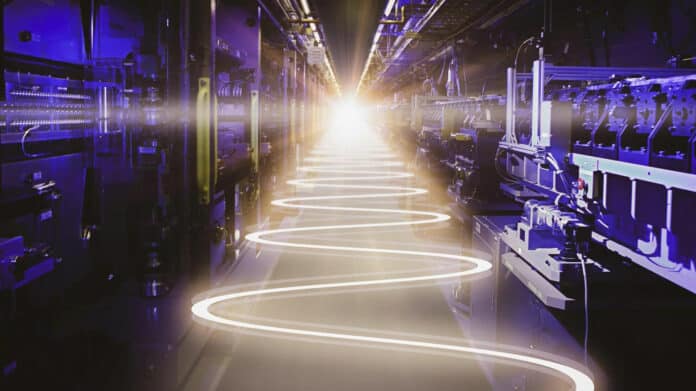The ability to take pictures and images is an incredibly powerful tool for scientists. With the help of cameras and other imaging technologies, scientists can capture visual data that can be analyzed to gain insights into various phenomena. Whether it’s studying the structure of a cell or observing the behavior of animals in the wild, images can provide valuable information that can’t be obtained through other means. In fact, the use of imaging technologies has revolutionized many fields of science, including biology, astronomy, and geology, among others.
However, picking up details becomes challenging when objects become very small and move very fast. Beyond a certain scale, the light waves are too long to capture many details. In such cases, more precise and fine-tunable methods are required. This is where X-rays, and specifically hard X-ray lasers, could play a crucial role.
In this regard, the Department of Energy’s SLAC National Accelerator Laboratory has switched on to the world’s most powerful X-ray laser. The newly upgraded Linac Coherent Light Source (LCLS) X-ray free-electron laser (XFEL) successfully produced its first X-rays, with up to a million X-ray flashes per second.
The LCLS-II is built on the success of LCLS, the world’s first hard XFEL, which produced its first light in April 2009. LCLS generates X-ray pulses a billion times brighter than anything that had come before. It accelerates electrons through a copper pipe at room temperature, which limits its rate to 120 X-ray pulses per second.
The $1.1-billion LCLS-II XFEL upgrade provides a major jump in capability – moving from 120 pulses per second to up to a million X-ray pulses per second, 8,000 times more than LCLS. It can produce an almost continuous X-ray beam that, on average, will be 10,000 times brighter than its predecessor.
Both LCLS and LCLS-II use electrons accelerated to nearly the speed of light to generate beams of extremely bright X-ray laser light. The electrons then pass through a series of wiggly magnetic fields that force them to travel a zigzag path and give off energy in the form of X-rays.
According to SLAC, the LCLS-II will enable researchers to examine the details of quantum materials with unprecedented resolution to drive new forms of computing and communications and reveal unpredictable and fleeting chemical events to teach us how to create more sustainable industries and clean energy technologies. It will also help them study how biological molecules carry out life’s functions to develop new types of pharmaceuticals and study the world on the fastest timescales to open up entirely new fields of scientific investigation.
“The light from SLAC’s LCLS-II will illuminate the smallest and fastest phenomena in the universe and lead to big discoveries in disciplines ranging from human health to quantum materials science,” said U.S. Secretary of Energy Jennifer M. Granholm in an official statement. “This upgrade to the most powerful X-ray laser in existence keeps the United States at the forefront of X-ray science, providing a window into how our world works at the atomic level. Congratulations to the incredibly talented engineers and researchers at SLAC who have poured so much into this project over the past several years, all in the pursuit of knowledge.”
